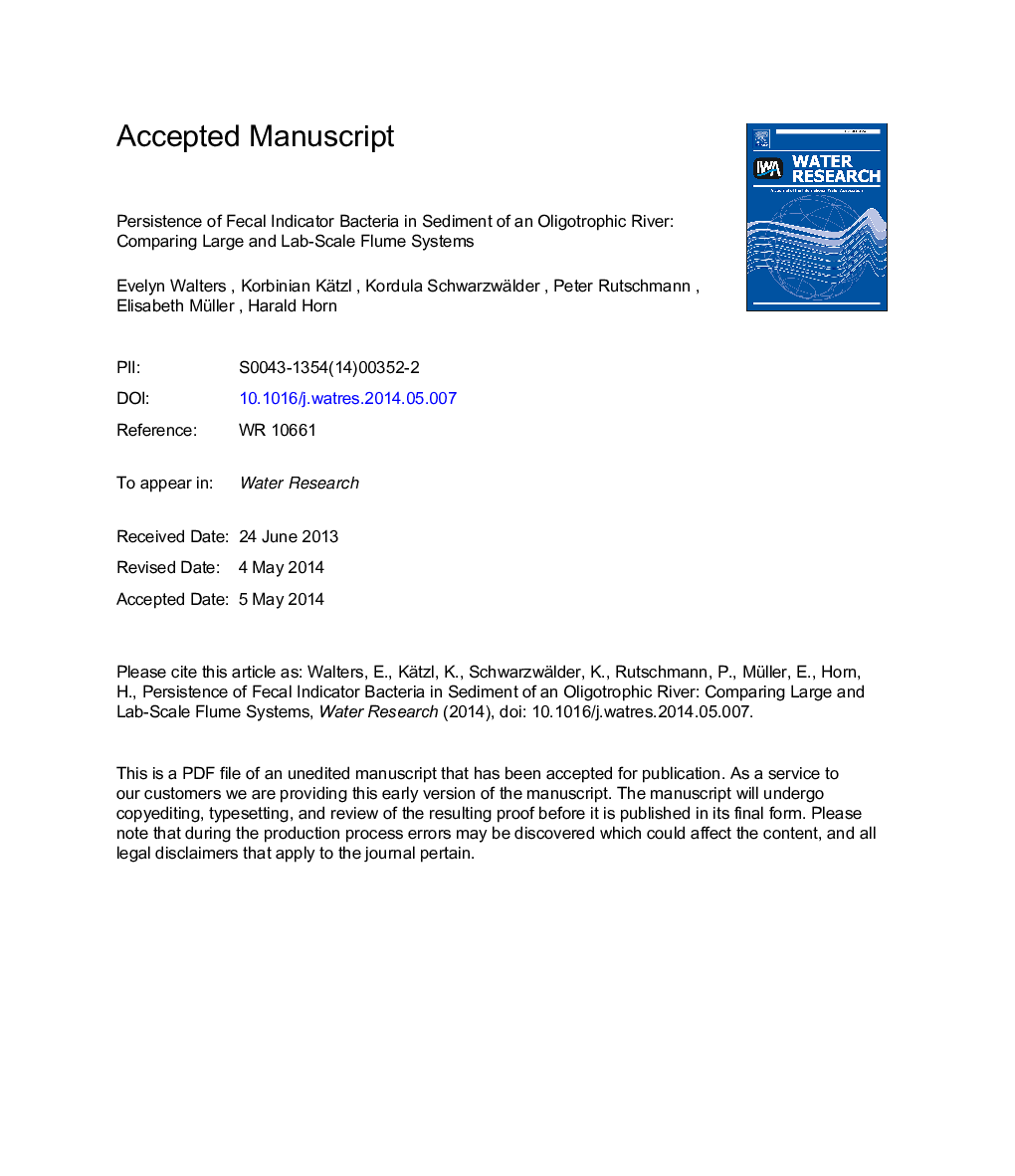| Article ID | Journal | Published Year | Pages | File Type |
|---|---|---|---|---|
| 6366564 | Water Research | 2014 | 37 Pages |
Abstract
It was seen that in the lab-scale flume having a very low bed shear stress (0.3 N mâ2), E. coli and enterococci survival in 3-cm-deep substratum cages was nearly the same as in a thin biofilm (200 μm). However, in the large-scale flume system characterized by a bed shear stress of 9 N mâ2, the added protection of the deeper substratum cages promoted considerably longer survival of E. coli and enterococci than the thin biofilm. Additionally, the FIB removal mechanisms in the two flume systems varied. At the lab-scale, enterococci was seen to persist twice as long as E. coli, while in the large-scale flume the two FIB were removed at the same rate. A comparison of qPCR analyses performed in both flumes suggests that bed sediment erosion and the influence of grazers/predators were responsible for FIB removal from the sediments in the large-scale flume, whereas in the lab flume FIB inactivation caused removal. These results indicate that hydraulic parameters such as bed shear stress as well as the presence of macroinvertebrates in a system are both important factors to consider when designing flumes as they can significantly impact FIB persistence in sediments of fast-flowing, alpine streams.
Related Topics
Physical Sciences and Engineering
Earth and Planetary Sciences
Earth-Surface Processes
Authors
Evelyn Walters, Korbinian Kätzl, Kordula Schwarzwälder, Peter Rutschmann, Elisabeth Müller, Harald Horn,
